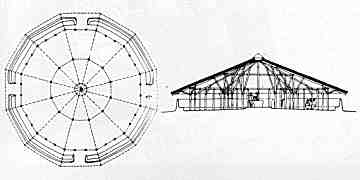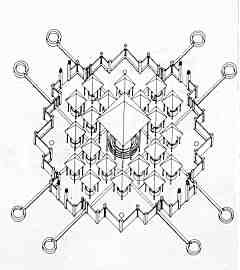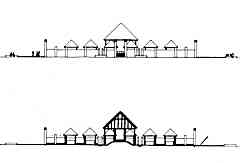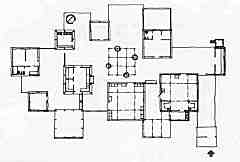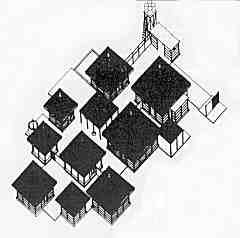TERCEIRO LIVRO
A FEW GRASS HOUSES
'"Excellently observed" answered Candide, "but let us take care of our garden"'. Last line of Candide by Voltaire.
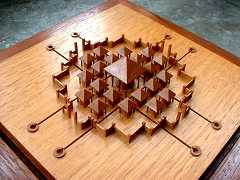 |
When buildings were needed but there was almost no money, I always turned to the traditional way of building, to the Mozambican vernacular to make a beginning. It is the way most buildings in Mozambique are still made and almost everyone knows how to do them. The sticks and the reeds, the mud and the grass are all around, to be had for free or for very little money. Yet it was only as a last recourse that such proposals would be accepted.
The blacks always wanted a casa de branco - a white man's house, instead. They were ashamed of their own wonderful, most suitable and economical grass houses.
These few grass houses are the more adventurous of a number of quite straightforward groups of huts and a couple of long houses.
|
The Cathedral of Huts for Maciene was summarily dismissed by the Bishop as unsuitable. It celebrates the traditional components of a "kraal" in the outer screen wall. In the grouping of the huts and in the round family stands in each family hut. It makes the sign of the cross tour times, with the crossed water channels, with the screen walls, with the huts and as a crossing of field paths. The central hut, the altar's house, was to have been built by the community. Each of the smaller huts was to be built by each family. Each family cockpit was to be raised a few steps above the ground. The inner face of the screen wall would have carried seats and four corners were to be planted with huge spherical, dark green cashew nut trees. |
| The Clandestine Nursery School in the Caniço is a village of many houses. I designed it and built it for the Obra da Infância, an association of good ladles that looked after abandoned children and orphans. The association had very little money and the Municipality would not allow any permanent building in the Caniço. As it was, we had to make three attempts to build the school. The first two times we were stopped by the Municipal Police. We built it with a bush carpenter and unskilled labourers. It is made from sticks, reeds and grass. The windows and doors were given to us - they came from demolished buildings in the city. The school had a vegetable garden attached to it. It was tended by the older children from the Caniço and by the orphans. Every day an excellent vegetable soup was made from the school's own garden. They followed Candide's advice - they took care of their garden. |
| HOME PAGE | CONTENTS PAGE | PREVIOUS PAGE | NEXT PAGE |
